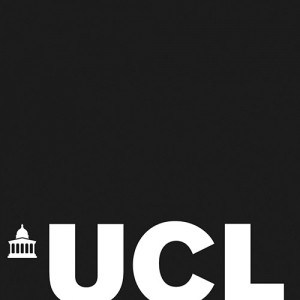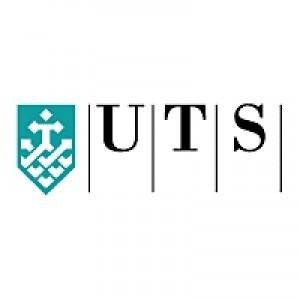Photos of university / #ucl
The BA Art and Design programme at University College London offers students a comprehensive and innovative education in the fields of contemporary art, visual culture, and creative practice. Designed to foster both technical skills and critical thinking, this programme encourages students to explore a wide range of artistic disciplines, including painting, sculpture, printmaking, digital media, and installation art. Throughout the course, students are provided with access to state-of-the-art facilities and are supported by a team of experienced faculty members who are active practitioners and researchers in their fields. The curriculum emphasizes experimentation, interdisciplinary approaches, and the development of a personal artistic voice, preparing graduates for diverse careers within the arts sector, including contemporary art practice, curatorial work, art education, and further postgraduate study. Students engage in rigorous studio practice, participate in exhibitions and collaborative projects, and critically analyze art and design from historical and contemporary perspectives. The programme also offers opportunities for internships, residencies, and engagement with the broader arts community, aiming to cultivate well-rounded, innovative artists and designers who can contribute meaningfully to contemporary cultural discourses. With its vibrant academic environment located in the heart of London, UCL's Art and Design programme equips students with the skills, knowledge, and confidence to succeed in the competitive world of art and creative industries, fostering the next generation of influential artists and designers.
This programme aims to inform and inspire, to challenge orthodoxies and encourage a freshness of vision. It provides support and guidance for learning and teaching in art and design, identifying strategies to motivate and engage pupils in making, discussing and evaluating visual and material culture.
Through seminars and studio-based activities, students will study the concepts, processes and skills of art, craft and design, sharing their knowledge and understanding with other student teachers and considering how it relates to the secondary curriculum. Towards the end of the PGCE, students will build on their own practice by initiating a curriculum development project, culminating in the display of their work at a final exhibition that represents their personal philosophy for art and design education.
Students undertake two level 7 (Master’s-level) modules of 30 credits each, totaling 60 credits. These can be carried forward onto full Master’s programmes at the IOE.
The Secondary PGCE consists of three core modules: two Master’s-level (level 7) modules, which are assessed through written assignments, and the Professional Practice module, which is assessed by the observation of practical teaching in placement schools.
Completion of the Professional Practice module and the two level 7 (Master’s level) modules (60 credits) will result in the award of a Postgraduate Certificate of Education (PGCE). Completion of the Professional Practice module and one or two level 6 (undergraduate/Bachelor’s level) modules, will lead to the Professional Graduate Certificate of Education (PgCE).
Core modules
- Subject Studies - Art and Design (30 Master's-level credits)
- Wider Educational Studies - Art and Design (30 Master's-level credits)
- Professional Practice
Placement
You will spend two-thirds of your time (120 days) in schools, working with art and design mentors who support you through your two school placements. We are fortunate to have a good choice of schools with whom we work, with some outstanding mentors and strong art and design departments. The Professional Practice module is assessed through these placements, associated tasks and a portfolio.
Teaching and learning
The programme is delivered via keynote lectures, subject lectures, seminars, workshops, tutorials and directed study days at the IOE, as well as time spent in placements. Assessment is by practical teaching, assignments and portfolio tasks. Students also record their progress in an assessment record file (ARF). This will form part of an ongoing portfolio charting the student's continuing professional development.
First degree
Normally a minimum of a lower second-class UK Bachelor’s degree or an overseas qualification of an equivalent standard in an Art and Design related subject.
A levels
No specific subjects required.
GCSEs
English Language and Mathematics at grade C.
School experience
Prospective students must complete a minimum of five days of school experience before they can be enrolled on the Secondary PGCE. This may involve observations, work experience (e.g. as a teaching assistant or cover supervisor), or voluntary work. Applicants must ensure that their school experience is relevant in helping them to prepare for the Secondary PGCE, during which Student Teachers are placed in a wide range of schools across London and the South East.
DBS and Occupational Health
If you are made an offer you will be required to successfully complete Occupational Health and Disclosure Barring Service (DBS) Enhanced Disclosure checks. The total cost of these checks is £125. These checks are required to ensure you meet the Department for Education’s requirements for physical and mental health to teach, as well as assessing your suitability for access to children and vulnerable adults.
Skills tests
All applicants must successfully complete professional skills tests in literacy and numeracy before they can enrol.
The Art and Design programmes at University College London offer a variety of financing options to support students throughout their studies. Prospective students are encouraged to explore multiple funding sources, including government loans, scholarships, bursaries, and external funding opportunities. UK students may be eligible for student loans provided by the Student Loans Company, which cover tuition fees and contribute to living costs, subject to eligibility criteria. International students should consider private funding, scholarships, or sponsorship programs that can significantly offset the costs associated with studying in the UK. UCL’s Financial Support Office provides detailed guidance on available scholarships specifically for Art and Design students, including merit-based awards and need-based bursaries, which are awarded based on academic excellence or financial circumstances. Additionally, students can apply for external scholarships offered by cultural institutions, arts foundations, and international organizations that aim to foster talent in creative disciplines. Part-time work opportunities within and outside of the university can also help students manage their finances, with some students opting to engage in roles related to their field of study to gain relevant experience while earning income. UCL offers various advice services to help students plan their finances effectively, including budgeting workshops and one-on-one financial counseling. It is important for students to carefully review the scholarship application deadlines and eligibility criteria, and to prepare comprehensive application materials to increase their chances of securing funding. Prospective students are advised to start exploring funding options early in their application process to ensure they have sufficient financial support for their studies. The university also provides guidance on student insurance, visa requirements related to funding, and work regulations for international students. Overall, the financial landscape for Art and Design programmes at UCL is designed to be accessible and supportive, enabling students to focus on their creative development without undue financial stress.
The Bachelor of Arts in Art and Design at University College London offers students a comprehensive and immersive education in various aspects of visual arts, contemporary design practices, and creative thinking. This program is designed to nurture students' artistic skills, critical analysis, and innovative capabilities through a diverse curriculum that combines studio practice, theoretical studies, and professional development. Students have the opportunity to explore a wide range of media, including drawing, painting, sculpture, digital media, and applied arts, enabling them to develop their unique artistic voice and technical proficiency. The program emphasizes the importance of understanding historical, cultural, and social contexts of art and design, encouraging students to engage with contemporary issues through their creative work.
UCL’s Art and Design program offers a flexible learning environment with options for specialization in areas such as Fine Art, Graphic Design, Multimedia, or Sculpture, among others. Students benefit from access to state-of-the-art facilities, including dedicated studios, workshops, and digital labs, fostering a hands-on approach to learning. The curriculum is designed to promote experimentation, critical thinking, and problem-solving skills, preparing graduates for diverse careers in the arts sector, including gallery curating, exhibition design, digital arts, teaching, and freelance creative work.
Throughout the program, students participate in exhibitions, collaborative projects, and industry placements that provide real-world experience and networking opportunities. UCL's faculty comprises experienced artists, designers, and researchers who mentor students and support their artistic development. The program also encourages critical engagement with global art scenes and contemporary design trends, ensuring graduates are well-equipped to contribute meaningfully to cultural and creative industries worldwide. Upon completion, students receive a BA degree in Art and Design, opening pathways to further postgraduate studies or professional careers within the arts sector.








